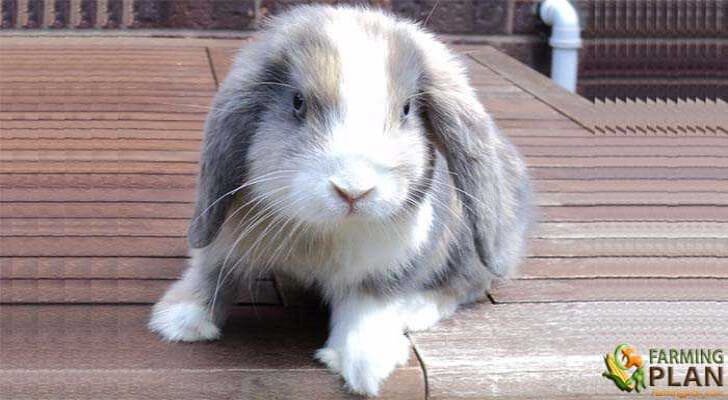The Vienna rabbit is native to Austria, slate blue, with erect ears, head, and strong legs. For some years this breed has begun to emerge in the United Kingdom. Some historians do not know the precise origin of this race that the Belgians believe derived from the Blue of Beveren. Whereas it is very common the belief that descends of the Blue Belier, not missing those who think that it is a cross between the Giant of Flanders and The Silver of Champagne.
There is some confusion between this breed and the Beveren Blue. The Belgians reject it and the English, who call it Imperial rabbits, consider that it is the same race. Some French rabble-growers argue against this consideration of the English, in view of the very apparent differences between the two races, which does not justify the English position and advocate the proper selection and subsequent differentiation of Two, which, in their opinion, must subsist with their respective peculiar characteristics.

Characteristics of Vienna Rabbit
The Vienna rabbit is a fairly long animal, with a strong head and no dewlap, wide ears, long, with round ends. It has a cylindrical body and is very muscular, with well-developed back thighs. In general, it is very thick and compact. The adult animal can weigh 3.5 to 5 kilograms.
The neck is almost imperceptible and has a large round head, ears are straight and measure between 11 and 13.5 cm. Females of this species may have a dewlap. Most noteworthy its coat is dense, fairly long, shiny, flexible, homogeneous and silky. It is a deep blue slate. There is dark blue-gray. You May Also Like To Read Dutch Rabbit
Very prolific breed with meat and fur production, abundant hair. The Blue of Vienna is a lively, vigorous and rustic rabbit, with very fine white flesh. At six or seven months of two kilograms of meat. The skin is much appreciated by the paltry in batches of some importance, properly homogeneous in tone. Size is also an essential factor in valuation. You May Also Like To Read Harlequin Rabbit
Food
The Vienna rabbit should be fed with green vegetables and alfalfa feed.
Usage
The Vienna rabbit is a breed that is raised for various purposes, including the production of its meat, as a pet. And being a breed that can be produced easily, and is fast growing. Similarly, some traders have produced this breed to sell their skin.
Breeding
It is carried out perfectly in claustración and in semi Libertad, obtaining with the latter system more alive, vigorous and precocious animals. If this method of breeding can not be practiced, the current size of the cages should be increased. You May Also Like To Read Enerby Island Rabbit
Reproduction
To choose the specimens that to a greater degree present the characteristics that determine the pattern, besides the physical characters of sanity, robustness, vigor, and vivacity that denote perfect health.
The females breastfeed and take care of their little ones perfectly, and the rabbit-owner must provide them with large lodgings and an abundant, varied and nutritious diet. The rabbits are vigorous and rustic, very early and not demanding, neither in the lodging nor in the feeding. You May Also Like To Read Flemish Giant Rabbit
Selection
Pair young males with older females or vice versa. Practice, at three months, the first selection, rejecting individuals with hairs or white spots.
Defects
The Vienna rabbit has some flaws:
- Round shape.
- Clear or other colored eyes other than blue.
- Thin, drooping, V-shaped ears.
- White nails.
- Hair too short, rustic to the touch.
- Pale blue or too gray.
- Stains composed of white hairs or any other color.
In this race, there is the blue silver variety, notable for its early growth and meat of exquisite taste.
Temperament
The Vienna rabbit has a very docile character and has a lot of calm, characteristic that makes it perfect to have it as a pet.
Special Feature
The Vienna rabbit can not be exposed to abrupt climatic changes. Space where this species lives must be large enough for it to jump and run in complete freedom. Furthermore, If this race lives in places with a lot of dust they can suffer respiratory problems. In addition, this breed when raised in homes must have a space in which alone can be, where no people or other pets enter.
Regardless of whether this breed is raised outdoors or at home, it must have access to the outdoors. When living in open spaces breeders should be aware that the rabbits do not stare at depredators. It is a heavy breed, so carers, when lifting or carrying them, should hold them very well, as it can have spinal injuries.
Rabbit Profile
| Rabbit name | Vienna Rabbit |
| Other Name | Any |
| Rabbit Purpose | For the production of their flesh and skin. As a pet. |
| Coat color | Blue slate |
| Weight | 3.5 to 5.5 Kg. |
| Climate Tolerance | Warm climates |
| Country of Origin | Austria |
Conclusion
If you’re looking for a breed of rabbit and want to know about the Vienna Rabbit, this guide should help. We’ll take a look at some interesting facts about this specific type of rabbit, how it got its name, where it’s from originally and what makes them different than other breeds. This might not be your ideal choice if you’ve never owned rabbits before because they can be difficult to care for properly but we hope that our information will give you enough insight into these fluffy creatures so that when you do decide on one as an addition to your family or farm. So without further ado, let’s get started with everything there is to know about Vienna.
As a References: petguide


